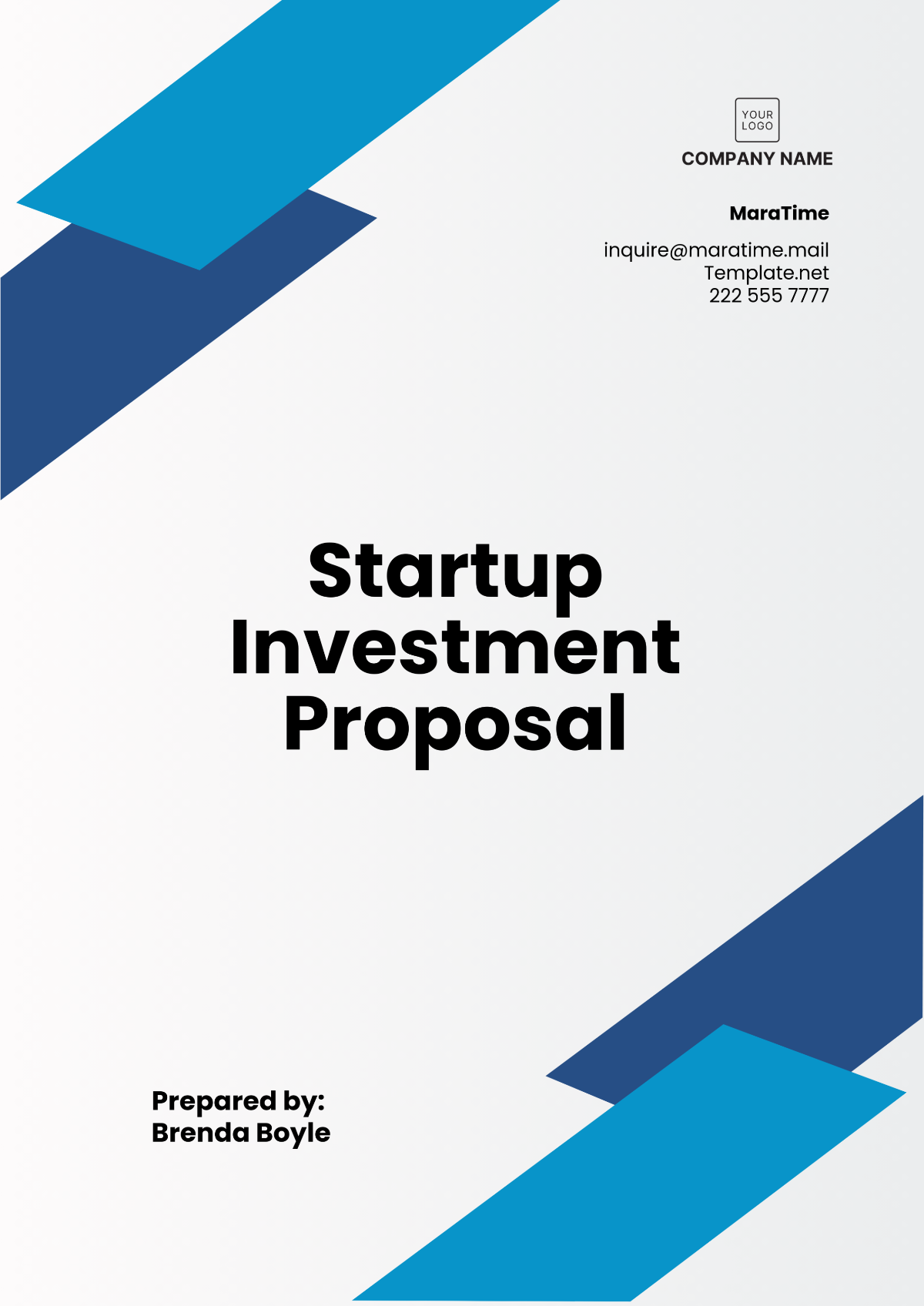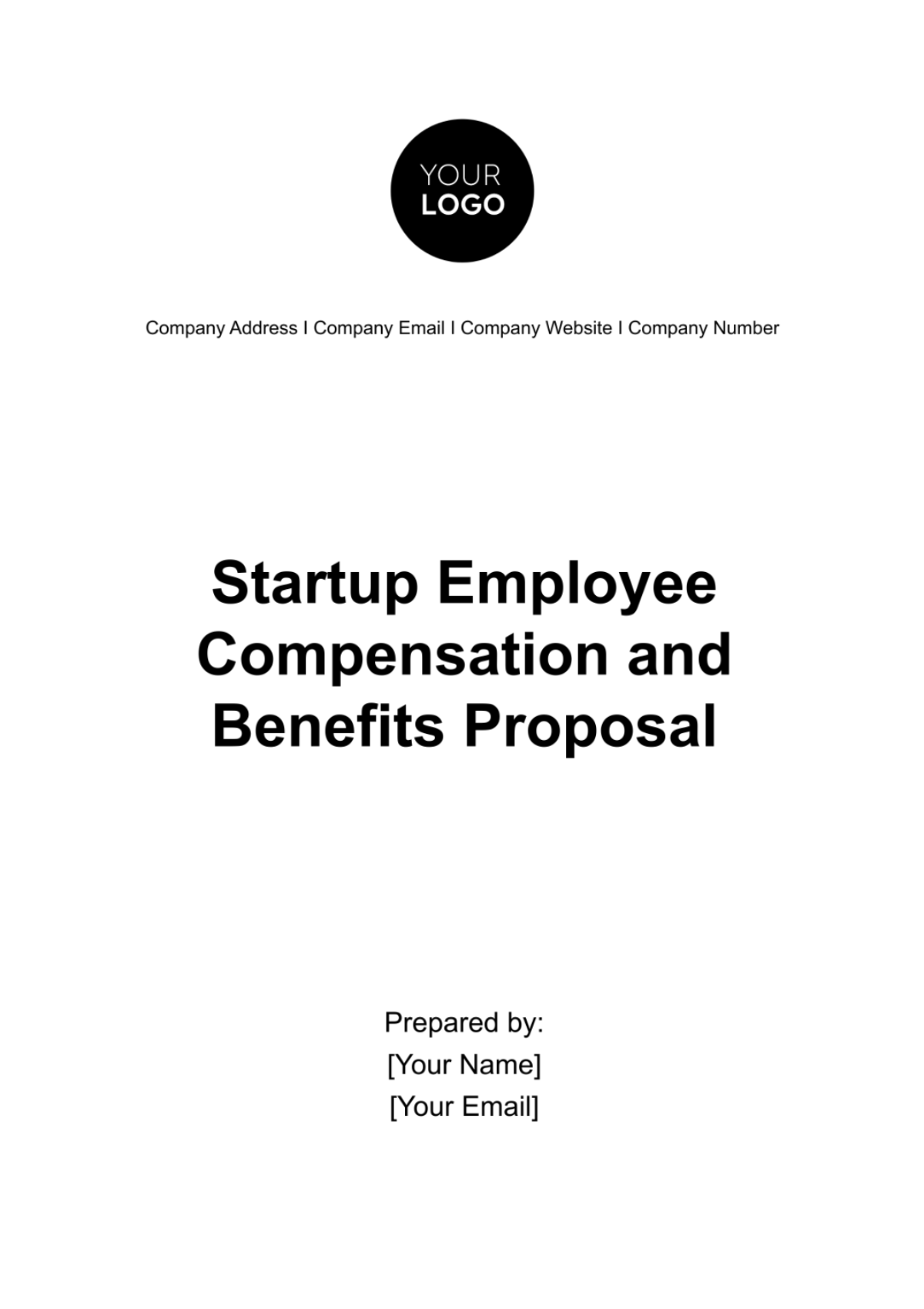Startup Funding Request Proposal
Prepared By: [Your Name]
This document presents a detailed proposal seeking startup funding for [Your Company Name]. It provides an exhaustive insight into the objectives, methodology, timeline, and budget implications of the proposed project. Additionally, it outlines the anticipated benefits, potential risks, and mitigation strategies.
EXECUTIVE SUMMARY
Our startup, [Your Company Name], focuses on [target market], and offers [unique value proposition]. Our financial projections indicate significant growth potential, and we are seeking funding to accelerate our journey towards achieving key milestones. We believe that with the right support, [Your Company Name] has the potential to disrupt the market and become a leader in [industry/sector].
OBJECTIVES
Market Penetration: The primary objective of our startup is to penetrate the target market and establish a significant presence within the first 12 months of operation. This will be achieved by leveraging innovative marketing strategies and delivering exceptional value to customers.
Revenue Generation: Our goal is to achieve sustainable revenue growth by capturing market share and increasing customer retention. We aim to generate a steady stream of revenue through both product sales and recurring service subscriptions.
Product Development: We are committed to continuous product development to enhance our offerings and stay ahead of competitors. Our objective is to roll out new features and improvements based on customer feedback and market trends.
Operational Efficiency: We seek to optimize our operational processes to improve efficiency and reduce costs. By streamlining manufacturing, distribution, and supply chain management, we aim to maximize profitability and scalability.
Brand Building: Establishing a strong brand presence is crucial for long-term success. Our objective is to build brand recognition and loyalty through strategic marketing initiatives, exceptional customer service, and consistent delivery of high-quality products/services.
METHODOLOGY
Market Research: We will conduct comprehensive market research to understand customer needs, preferences, and purchasing behavior. This will involve analyzing industry reports, conducting surveys, and gathering data from primary and secondary sources.
Customer Segmentation: Based on market research findings, we will segment our target audience into distinct groups with similar characteristics and preferences. This will enable us to tailor our marketing messages and product offerings to specific customer segments.
Product Development: Our product development process will be iterative and customer-centric. We will gather feedback from early adopters and beta testers to identify areas for improvement and prioritize new features. Agile development methodologies will be employed to rapidly iterate and release updates.
Sales and Marketing Strategy: Our sales and marketing strategy will focus on a multi-channel approach to reach our target audience effectively. This will include digital marketing (such as social media advertising and content marketing), partnerships with industry influencers, participation in trade shows and events, and direct sales efforts.
Operational Optimization: We will implement best practices in operational management to streamline processes and improve efficiency. This will involve leveraging technology solutions for inventory management, logistics optimization, and workflow automation. Regular performance monitoring and continuous improvement initiatives will be key aspects of our operational strategy.
Performance Measurement: Key performance indicators (KPIs) will be defined to track progress towards our objectives. These KPIs will include metrics such as customer acquisition cost (CAC), customer lifetime value (CLV), churn rate, revenue growth, and market share. Regular performance reviews will inform strategic decision-making and course corrections as needed.
SCOPE
The scope outlines the key activities and milestones necessary to achieve the startup's objectives. It encompasses product development, marketing initiatives, operational setup, and other critical tasks.
Product Development:
Conduct market research and gather customer feedback.
Finalize product design and features.
Develop prototypes and conduct testing.
Obtain necessary certifications and regulatory approvals.
Marketing and Sales:
Develop marketing collateral and branding materials.
Launch marketing campaigns to create awareness.
Establish partnerships with distributors and retailers.
Build a sales team and establish sales channels.
Operational Setup:
Secure manufacturing facilities and equipment.
Set up supply chain logistics and distribution networks.
Implement quality control processes.
Hire and train operational staff.
Financial Management:
Set up accounting and financial systems.
Establish relationships with financial institutions.
Monitor cash flow and manage expenses.
Implement risk management strategies.
TIMELINE
The timeline outlines the projected duration for each major milestone or phase of the startup's development. It provides a clear roadmap for executing the scope of work outlined above.
Milestone | Duration |
|---|---|
Market Research | 2 months |
Product Design | 3 months |
Prototype Development | 4 months |
Regulatory Approvals | 2 months |
Marketing Strategy | 2 months |
Branding Development | 1 month |
Marketing Campaigns | 3 months |
Distributor Partnerships | 2 months |
Sales Team Recruitment | 1 month |
Manufacturing Setup | 4 months |
Supply Chain Establishment | 3 months |
Quality Control Implementation | 1 month |
Financial Systems Setup | 1 month |
Relationship Building with Financial Institutions | 2 months |
Cash Flow Monitoring | Ongoing |
BUDGET
Budget and Justification
Expense Category | Description | Amount ($) |
|---|---|---|
Product Development | Research, design, and development of the product | XXXX |
Manufacturing | Cost of materials, production, and assembly | XXXX |
Marketing | Advertising, branding, PR, and promotional expenses | XXXX |
Sales and Distribution | Sales team salaries, commissions, and distribution costs | XXXX |
Operations | Rent, utilities, equipment, and other operational costs | XXXX |
Legal and Regulatory | Legal fees, licenses, permits, and compliance expenses | XXXX |
Administrative | Office supplies, software subscriptions, and other admin expenses | XXXX |
Contingency | Buffer for unexpected expenses and contingencies | XXXX |
Total | XXXX |
Justification:
Product Development: Investment in research, design, and development is crucial to ensure the creation of a high-quality, market-ready product. This expense covers salaries for product developers, prototyping costs, and any necessary software or tools.
Manufacturing: This includes the cost of raw materials, production labor, and assembly expenses. We have negotiated favorable terms with suppliers to minimize costs while maintaining product quality.
Marketing: Building brand awareness and acquiring customers are essential for the success of our startup. Our marketing budget will cover digital advertising, content creation, PR campaigns, and sponsorships to reach our target audience effectively.
Sales and Distribution: We will allocate funds to hire and train a sales team, provide incentives such as commissions, and cover distribution costs to ensure our product reaches customers efficiently.
Operations: Rent, utilities, equipment maintenance, and other operational expenses are necessary to keep our business running smoothly. We have carefully budgeted for these costs based on market rates and projected growth.
Legal and Regulatory: Compliance with legal and regulatory requirements is crucial to avoid fines or legal issues that could hinder our progress. This budget includes legal fees for drafting contracts, obtaining licenses, and ensuring compliance with relevant regulations.
Administrative: Office supplies, software subscriptions, and other administrative expenses are necessary for day-to-day operations. We have budgeted for these costs to support the efficiency and productivity of our team.
Contingency: A contingency fund is essential to handle unforeseen expenses or changes in market conditions. By allocating a buffer for contingencies, we can mitigate risks and ensure the stability of our operations.
BENEFITS
Market Opportunity: Highlight the size and growth potential of the target market, demonstrating the opportunity for significant revenue generation and market share capture.
Innovative Solution: Emphasize the unique value proposition of the startup's product or service, showcasing how it addresses a pressing need or pain point in the market more effectively than existing solutions.
Scalability: Discuss the scalability of the business model, showcasing how the startup can rapidly expand its operations and capture additional market segments with minimal incremental costs.
Revenue Potential: Present the projected revenue streams and growth trajectory, illustrating the potential for substantial returns on investment for stakeholders.
Strategic Partnerships: Highlight any existing or potential strategic partnerships that can accelerate market penetration, enhance product development, or facilitate distribution channels.
RISK MANAGEMENT
Market Risk: Acknowledge the inherent uncertainty of market conditions, and outline strategies for mitigating market risk, such as diversification of target markets or flexible pricing models.
Technology Risk: Address any technological risks associated with product development, including potential technical challenges, intellectual property protection, and reliance on third-party technologies.
Competitive Risk: Assess the competitive landscape and articulate strategies for maintaining a competitive advantage, such as continuous innovation, strong branding, and customer loyalty programs.
Operational Risk: Identify potential operational challenges, such as supply chain disruptions, regulatory hurdles, or talent acquisition issues, and outline contingency plans to mitigate these risks.
Financial Risk: Discuss financial risks such as cash flow fluctuations, over-reliance on external funding, or unexpected expenses, and present strategies for prudent financial management and risk mitigation.
EXIT STRATEGY
Acquisition: Discuss potential acquisition opportunities by larger companies in the industry, highlighting any existing relationships or synergies that make the startup an attractive target for acquisition.
Initial Public Offering (IPO): Explore the possibility of taking the company public through an IPO, outlining the necessary steps to achieve this milestone, such as meeting regulatory requirements and building investor confidence.
Secondary Market: Consider the option of selling shares to private investors or participating in secondary market transactions as a means of providing liquidity to early investors and shareholders.
Management Buyout: Discuss the possibility of a management buyout as a potential exit strategy, especially if the founding team or key executives express interest in taking full control of the company.
Liquidation: Although less desirable, acknowledge the possibility of liquidating the company in the event that other exit options are not feasible, and outline the steps for orderly wind-down and distribution of assets to stakeholders.
CONCLUSION
In conclusion, [Your Company Name] presents an exciting opportunity for investment in a disruptive solution poised to address the current market problem. With a dedicated team, innovative product/service offering, and comprehensive go-to-market strategy, we are well-positioned to capture a significant share of the [target market]. Our financial projections demonstrate strong potential for growth and attractive returns for investors. We are confident that with the right support, [Your Company Name] will emerge as a leader in the [industry/niche] space. Thank you for considering our funding request, and we look forward to the opportunity to collaborate and drive success together.



























